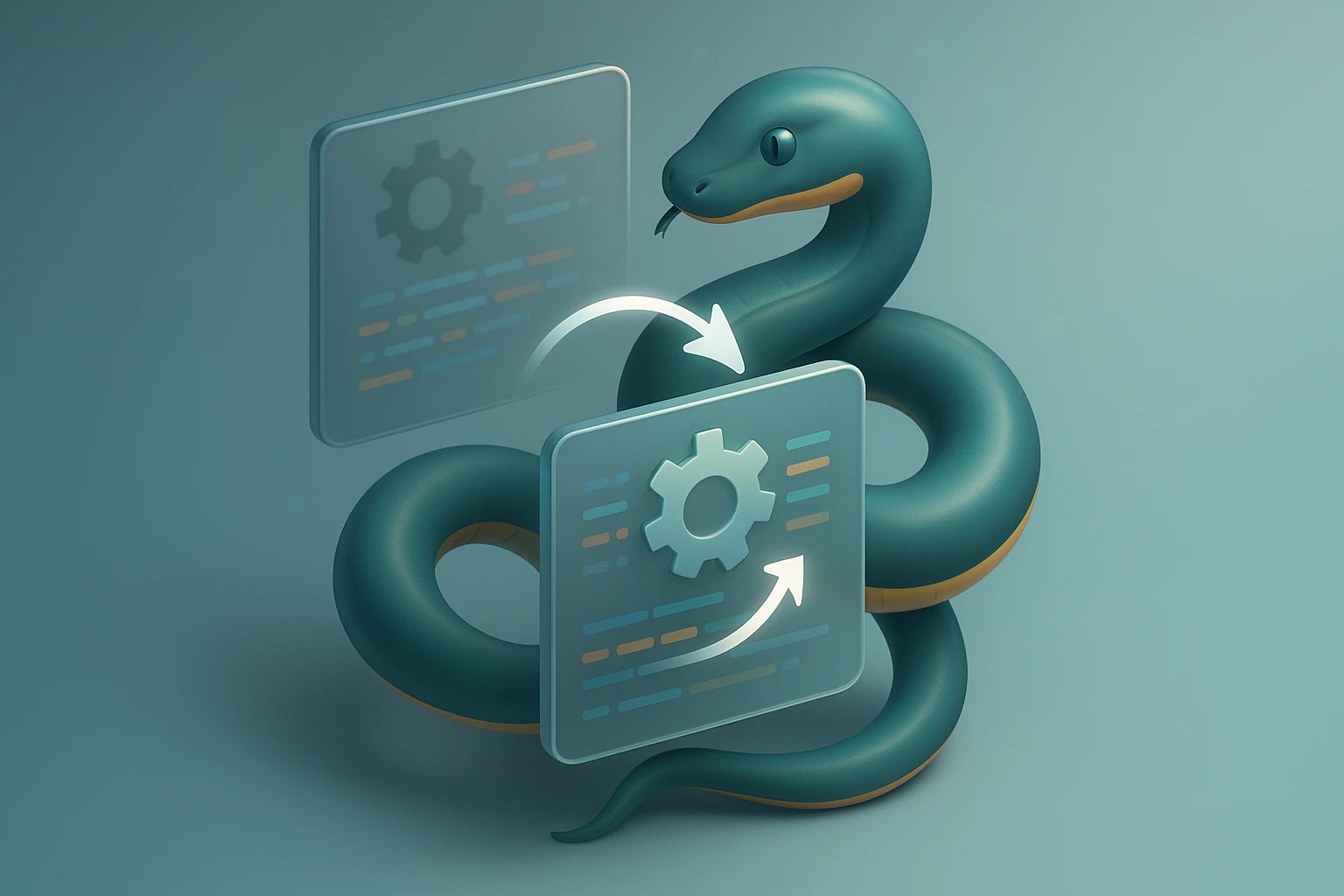How to Create a Virtual Environment
Illustration showing command-line steps to create a Python virtual environment: terminal with 'python -m venv env', folder tree, activation command and isolated packages. Overview.

Why Virtual Environments Matter in Modern Development
Every developer has faced the nightmare of conflicting dependencies. You're working on multiple projects, each requiring different versions of the same library, and suddenly nothing works. Your system becomes a tangled mess of incompatible packages, and you spend hours troubleshooting instead of building. This is precisely why understanding how to create and manage virtual environments isn't just a nice-to-have skill—it's essential for maintaining your sanity and productivity.
A virtual environment is an isolated workspace that keeps your project dependencies separate from your system-wide installations. Think of it as creating a clean room for each project, where everything stays organized and nothing interferes with anything else. This approach allows you to work on legacy projects requiring older libraries while simultaneously developing cutting-edge applications with the latest packages.
Throughout this guide, you'll discover multiple methods for creating virtual environments across different programming languages and platforms. We'll explore the technical details, best practices, and real-world applications that will transform how you manage your development projects. Whether you're a beginner taking your first steps or an experienced developer looking to refine your workflow, you'll find actionable insights that make your development process smoother and more efficient.
Understanding the Foundation of Virtual Environments
Before diving into the creation process, it's crucial to grasp what happens behind the scenes. When you create a virtual environment, you're essentially building a self-contained directory structure that houses a specific Python interpreter along with its own set of libraries and scripts. This isolation means that any packages you install within this environment won't affect your system-wide Python installation or other virtual environments.
The architecture consists of several key components working together. The environment contains its own Python binary, a site-packages directory where installed packages live, and activation scripts that modify your shell's environment variables. When activated, your system temporarily prioritizes this isolated environment, ensuring that all Python commands and package installations target this specific workspace rather than the global system.
"The single most important tool in a Python developer's arsenal is the ability to create isolated environments. Without this, you're building on quicksand."
Core Benefits of Isolation
Dependency management becomes exponentially easier when each project lives in its own bubble. You can experiment freely without worrying about breaking other projects. Testing different package versions becomes straightforward, and sharing your work with teammates or deploying to production becomes more predictable because you can specify exact versions of every dependency.
Security considerations also play a significant role. By isolating projects, you limit the potential damage from vulnerable packages. If one project requires a library with known security issues, that risk doesn't automatically spread to every other project on your system. This compartmentalization creates natural boundaries that protect your overall development environment.
Python Virtual Environment Creation Methods
Python offers several built-in and third-party tools for creating virtual environments, each with distinct advantages. The most common approach uses the venv module, which comes bundled with Python 3.3 and later versions. This native solution requires no additional installations and provides everything most developers need for standard projects.
Using the Built-in venv Module
Creating a virtual environment with venv is remarkably straightforward. Navigate to your project directory in the terminal and execute a simple command. The process creates a new directory containing all necessary files for your isolated environment. The beauty of this approach lies in its simplicity and reliability—it works consistently across different operating systems with minimal configuration.
For Unix-based systems (Linux and macOS):
- Open your terminal application
- Navigate to your project folder using the cd command
- Execute the creation command specifying your desired environment name
- Wait for the process to complete, typically taking just a few seconds
- Activate the environment using the source command
For Windows systems:
- Launch Command Prompt or PowerShell
- Change to your project directory
- Run the creation command with appropriate syntax
- Activate using the Scripts directory activation file
- Verify activation by checking the command prompt prefix
| Operating System | Creation Command | Activation Command | Deactivation |
|---|---|---|---|
| Linux/macOS | python3 -m venv myenv | source myenv/bin/activate | deactivate |
| Windows (CMD) | python -m venv myenv | myenv\Scripts\activate.bat | deactivate |
| Windows (PowerShell) | python -m venv myenv | myenv\Scripts\Activate.ps1 | deactivate |
Alternative Tools and Their Advantages
While venv serves most needs admirably, other tools offer specialized features for specific workflows. Virtualenv, the predecessor to venv, still maintains popularity due to its broader Python version support and additional features. It works with Python 2.7 and provides faster environment creation through cached installations.
Conda represents another powerful option, particularly favored in data science and scientific computing communities. Beyond Python packages, Conda manages dependencies across multiple languages and handles complex binary dependencies that pip sometimes struggles with. This makes it invaluable for projects involving numerical computing libraries, machine learning frameworks, or scientific analysis tools.
"Choosing the right virtual environment tool isn't about finding the best one—it's about finding the best one for your specific project needs and workflow."
Advanced Configuration and Customization
Once you've mastered basic environment creation, numerous configuration options allow you to tailor environments to specific project requirements. Understanding these options enables you to create more efficient, maintainable development setups that scale with your project complexity.
Managing Dependencies with Requirements Files
Requirements files serve as blueprints for your project's dependencies, making it trivial to recreate identical environments across different machines or share your setup with collaborators. These plain text files list every package your project needs, often including specific version numbers to ensure consistency.
Creating a requirements file involves using pip's freeze functionality, which captures your current environment's exact state. This snapshot includes not just the packages you explicitly installed, but also all their dependencies with precise version numbers. When someone else needs to set up your project, they simply create a new virtual environment and install from your requirements file, guaranteeing they get an identical setup.
Best practices for requirements files include organizing them by environment type (development, testing, production), commenting on why specific versions are pinned, and regularly updating them as your project evolves.
Environment Variables and Configuration
Virtual environments can incorporate custom environment variables that activate automatically when you enter the environment. This feature proves incredibly useful for managing API keys, database connections, or other configuration values that change between development and production environments.
Several approaches exist for managing these variables. Some developers modify the activation script directly, adding export commands that set variables when the environment activates. Others prefer using dedicated tools like python-dotenv, which loads variables from a .env file automatically. The latter approach offers better security since you can easily exclude the .env file from version control while sharing a template.
| Configuration Method | Pros | Cons | Best Use Case |
|---|---|---|---|
| Modified Activation Script | No additional dependencies, automatic loading | Less portable, harder to share safely | Personal projects, simple configurations |
| .env Files with python-dotenv | Secure, easy to template, widely supported | Requires additional package, manual loading in code | Team projects, production applications |
| System Environment Variables | Works across all projects, no code changes | Not project-specific, harder to manage | System-wide configurations, CI/CD pipelines |
| Configuration Files (JSON/YAML) | Structured, supports complex configs | Requires parsing code, not environment-specific | Complex applications, multi-environment setups |
Working with Multiple Environments
Real-world development often involves juggling multiple projects simultaneously, each with its own environment. Developing efficient workflows for switching between these environments saves considerable time and reduces the mental overhead of context switching.
Directory Structure and Organization
Establishing a consistent directory structure across projects makes managing multiple environments significantly easier. Many developers create a dedicated directory for all virtual environments, separate from project code. Others prefer keeping the environment folder within each project directory, making the relationship explicit and simplifying cleanup when projects end.
🔧 Keep environment directories named consistently across projects
📁 Consider using a centralized environments folder for easier management
🗂️ Document your structure in project README files
🔄 Use version control ignore files to exclude environment directories
✅ Regularly audit and remove unused environments to free disk space
"The difference between a chaotic development setup and a streamlined workflow often comes down to simple organizational habits practiced consistently."
Automation and Workflow Tools
Several tools exist specifically to simplify working with multiple virtual environments. Virtualenvwrapper adds convenience commands for creating, deleting, and switching between environments with minimal typing. It maintains all your environments in a single location and provides shortcuts that eliminate the need to remember long paths or activation commands.
For more sophisticated needs, tools like pyenv combined with pyenv-virtualenv allow managing not just virtual environments but also multiple Python versions simultaneously. This becomes essential when maintaining legacy applications alongside modern projects, or when testing code compatibility across different Python versions.
Virtual Environments in Development Workflows
Integrating virtual environments into your daily development routine transforms them from an occasional tool into a fundamental part of your workflow. This integration touches everything from initial project setup through deployment and maintenance.
Integration with IDEs and Editors
Modern integrated development environments understand virtual environments and provide seamless integration. Visual Studio Code, PyCharm, and other popular editors can automatically detect virtual environments in your project directory and configure themselves accordingly. This means your code completion, linting, and debugging tools all work with the correct package versions without manual configuration.
Setting up this integration typically involves pointing your IDE to the Python interpreter within your virtual environment. Once configured, the IDE uses this interpreter for all Python-related operations, ensuring consistency between what you see in your editor and what happens when you run code in the terminal.
Configuration steps generally include: locating the interpreter selection setting in your IDE preferences, browsing to your virtual environment's Python executable, selecting it as the project interpreter, and verifying that the IDE recognizes installed packages correctly. Most modern IDEs remember this setting per project, so you only configure it once.
Version Control Considerations
Virtual environment directories should never be committed to version control. These directories contain binary files, system-specific paths, and potentially thousands of files that bloat your repository unnecessarily. Instead, you commit the requirements file, which allows anyone to recreate your environment exactly.
Your .gitignore file should explicitly exclude common virtual environment directory names. This prevents accidental commits and keeps your repository focused on actual project code. Standard practice includes ignoring directories named venv, env, virtualenv, and similar variations that developers commonly use.
"A clean repository is a happy repository. Your version control should track your decisions and code, not the consequences of those decisions."
Troubleshooting Common Issues
Even with proper setup, you'll occasionally encounter issues with virtual environments. Understanding common problems and their solutions helps you resolve issues quickly and maintain productivity.
Activation Problems
Activation failures represent the most frequent issue newcomers face. On Windows, PowerShell's execution policy sometimes prevents activation scripts from running. The solution involves temporarily adjusting the execution policy to allow script execution, though this requires understanding the security implications.
On Unix systems, activation problems often stem from incorrect paths or permissions issues. Verifying that the activation script exists and has execute permissions usually resolves these issues. If you've moved your project directory, the activation script may contain old paths that need updating.
Package Installation Failures
Sometimes packages fail to install within virtual environments due to missing system dependencies, compiler issues, or network problems. The error messages typically provide clues about what's missing. For packages requiring compilation, you may need to install system-level development tools before the Python package will install successfully.
Network-related failures often resolve by trying again or using a different package index mirror. Some corporate networks require proxy configuration before pip can access external package repositories. Setting the appropriate environment variables for your proxy usually resolves these issues.
Best Practices and Professional Tips
Developing good habits around virtual environment usage elevates your development practice from functional to professional. These practices prevent common pitfalls and make your projects more maintainable over time.
Environment Naming Conventions
Consistent naming helps you quickly identify environments and their purposes. Simple names like "venv" or "env" work fine for single-project developers, but teams benefit from more descriptive names that indicate the project or Python version. Some developers include the Python version in the environment name, making it immediately obvious which interpreter the environment uses.
💡 Use descriptive names that indicate project purpose
🎯 Include Python version for multi-version projects
🏷️ Maintain consistent naming across your organization
📋 Document naming conventions in team guidelines
🔍 Make names searchable and memorable
Regular Maintenance Routines
Virtual environments require periodic maintenance to stay healthy and efficient. Regularly updating packages keeps you current with security patches and bug fixes. However, updates should be deliberate—blindly updating everything can introduce breaking changes. A better approach involves updating packages individually or in small groups, testing after each update.
Periodically recreating environments from requirements files serves as a health check for your project. If recreation fails, it reveals undocumented dependencies or version conflicts that would otherwise surface at the worst possible moment, like during deployment or when onboarding new team members.
"The best time to discover your environment isn't reproducible was yesterday. The second best time is right now, before it becomes a crisis."
Documentation and Team Collaboration
Documenting your virtual environment setup process saves enormous time for future you and your collaborators. A good README file includes the exact commands needed to create and activate the environment, install dependencies, and verify everything works correctly. This documentation transforms environment setup from a frustrating guessing game into a straightforward checklist.
Include common troubleshooting steps in your documentation, especially solutions to platform-specific issues you've encountered. Future developers will thank you when they hit the same problems.
Virtual Environments Beyond Python
While Python virtual environments are most common, the concept extends to other programming languages and development contexts. Understanding these parallel approaches broadens your toolkit and helps you apply similar principles across different technology stacks.
Node.js and npm
JavaScript developers use npm or yarn to manage project dependencies, with node_modules directories serving a similar isolation function to Python virtual environments. Each project maintains its own local package directory, preventing version conflicts between projects. The package.json file serves the same purpose as requirements.txt, documenting dependencies and enabling reproduction.
Ruby and Bundler
Ruby's Bundler provides dependency isolation through Gemfiles and the bundle exec command. While the mechanism differs from Python's approach, the underlying principle remains identical—ensuring each project uses exactly the versions it needs without interference from other projects or system-wide installations.
Performance Optimization Strategies
Virtual environments can impact development speed, particularly during creation and package installation. Understanding optimization techniques helps minimize this overhead and keeps your workflow smooth.
Caching and Reusability
Package managers cache downloaded packages, significantly speeding up subsequent installations. Ensuring your cache remains healthy and properly configured reduces installation times dramatically. Some developers maintain a "base" environment with commonly used packages, cloning it for new projects rather than installing everything from scratch each time.
Tools like virtualenv offer faster environment creation through aggressive caching strategies. For projects requiring frequent environment recreation, these speed improvements compound into significant time savings over weeks and months of development.
"Every second saved in your development workflow multiplies across every day you work. Small optimizations become massive productivity gains."
Security Considerations
Virtual environments play an important role in maintaining security hygiene across your projects. Understanding the security implications helps you make informed decisions about dependency management and environment configuration.
Dependency Auditing
Regularly auditing your dependencies for known vulnerabilities should be standard practice. Tools like pip-audit scan your installed packages against vulnerability databases, alerting you to security issues before they become problems. Running these audits as part of your development routine catches issues early when they're easiest to address.
Keeping dependencies updated represents the primary defense against known vulnerabilities, but updates must be balanced against stability concerns. Security updates deserve immediate attention, while feature updates can wait for appropriate testing windows.
Isolation Limits
Understanding what virtual environments do and don't protect against prevents false security assumptions. They isolate Python packages but don't create security boundaries against malicious code. A compromised package in your virtual environment can still access your file system, network, and other system resources. Virtual environments organize and isolate dependencies—they're not sandboxes or security containers.
Continuous Integration and Deployment
Virtual environments become even more critical in automated build and deployment pipelines. Ensuring consistency between development, testing, and production environments prevents the classic "works on my machine" problem that plagues software teams.
CI/CD Pipeline Integration
Continuous integration systems typically create fresh virtual environments for each build, ensuring tests run in a clean, reproducible state. Your pipeline configuration should mirror your local development setup as closely as possible, using the same Python version and installing from the same requirements file.
Caching strategies in CI/CD pipelines balance speed against reproducibility. Caching your virtual environment or pip cache directory speeds up builds significantly, but you must ensure cache invalidation works correctly so changes to requirements trigger fresh installations.
Future Trends and Evolving Practices
The landscape of dependency management and environment isolation continues evolving. Staying aware of emerging tools and practices helps you adopt improvements that enhance your workflow.
Containerization and Virtual Environments
Docker and similar containerization technologies provide another layer of isolation beyond virtual environments. While containers and virtual environments serve different purposes, they complement each other effectively. Containers isolate entire operating system environments, while virtual environments isolate Python dependencies within those containers.
Many modern development workflows use both—virtual environments for local development and containers for testing and deployment. This combination provides consistency across the entire development lifecycle while maintaining the convenience and speed of virtual environments for day-to-day coding.
Modern Dependency Management Tools
Tools like Poetry and Pipenv represent the next generation of Python dependency management, combining virtual environment management with more sophisticated dependency resolution and lock files. These tools aim to simplify workflows while providing better reproducibility guarantees than traditional pip and requirements files.
Adopting these newer tools involves trade-offs. They offer improved workflows and better dependency management but require learning new commands and concepts. For new projects, the investment often pays off. For existing projects, migration costs must be weighed against potential benefits.
Frequently Asked Questions
What happens if I delete my virtual environment directory?
Deleting a virtual environment directory removes all installed packages and configuration within that environment, but your project code remains completely safe. You can recreate the environment using your requirements file, reinstalling all dependencies with a single command. This is actually a common maintenance practice—periodically deleting and recreating environments ensures they stay clean and reproducible.
Can I move a virtual environment to a different location?
Virtual environments contain absolute paths to their Python interpreter and other components, making them non-portable. Moving an environment directory typically breaks it because these hardcoded paths become invalid. Instead of moving environments, create a new one in the desired location and install your dependencies there using your requirements file. This approach is faster and more reliable than trying to fix broken paths.
How much disk space does a virtual environment use?
A minimal virtual environment without any additional packages typically uses 10-30 MB, depending on your Python version and operating system. As you install packages, this grows based on those packages and their dependencies. Data science environments with libraries like NumPy, Pandas, and TensorFlow can easily reach several gigabytes. Regularly cleaning up unused environments helps manage disk space effectively.
Should I create a new virtual environment for every project?
Yes, creating a separate virtual environment for each project represents best practice and prevents dependency conflicts between projects. Even small scripts benefit from their own environments because requirements change over time, and what starts as a simple script often grows into something more complex. The small upfront time investment prevents significant headaches later.
Do virtual environments work with Jupyter notebooks?
Yes, Jupyter notebooks work excellently with virtual environments. After activating your environment, install Jupyter within it, and the notebook will use that environment's packages automatically. For more sophisticated setups, you can register your virtual environment as a Jupyter kernel, allowing you to switch between different environments from within the Jupyter interface. This flexibility makes it easy to work on multiple projects with different dependencies all within Jupyter.
Can I share a virtual environment between multiple projects?
While technically possible, sharing virtual environments between projects defeats their primary purpose—isolation. Different projects inevitably develop different dependency requirements over time, and sharing an environment means changes for one project affect all others. The disk space saved isn't worth the complexity and potential conflicts introduced. Create separate environments for each project to maintain clean separation and avoid future problems.
Sponsor message — This article is made possible by Dargslan.com, a publisher of practical, no-fluff IT & developer workbooks.
Why Dargslan.com?
If you prefer doing over endless theory, Dargslan’s titles are built for you. Every workbook focuses on skills you can apply the same day—server hardening, Linux one-liners, PowerShell for admins, Python automation, cloud basics, and more.




